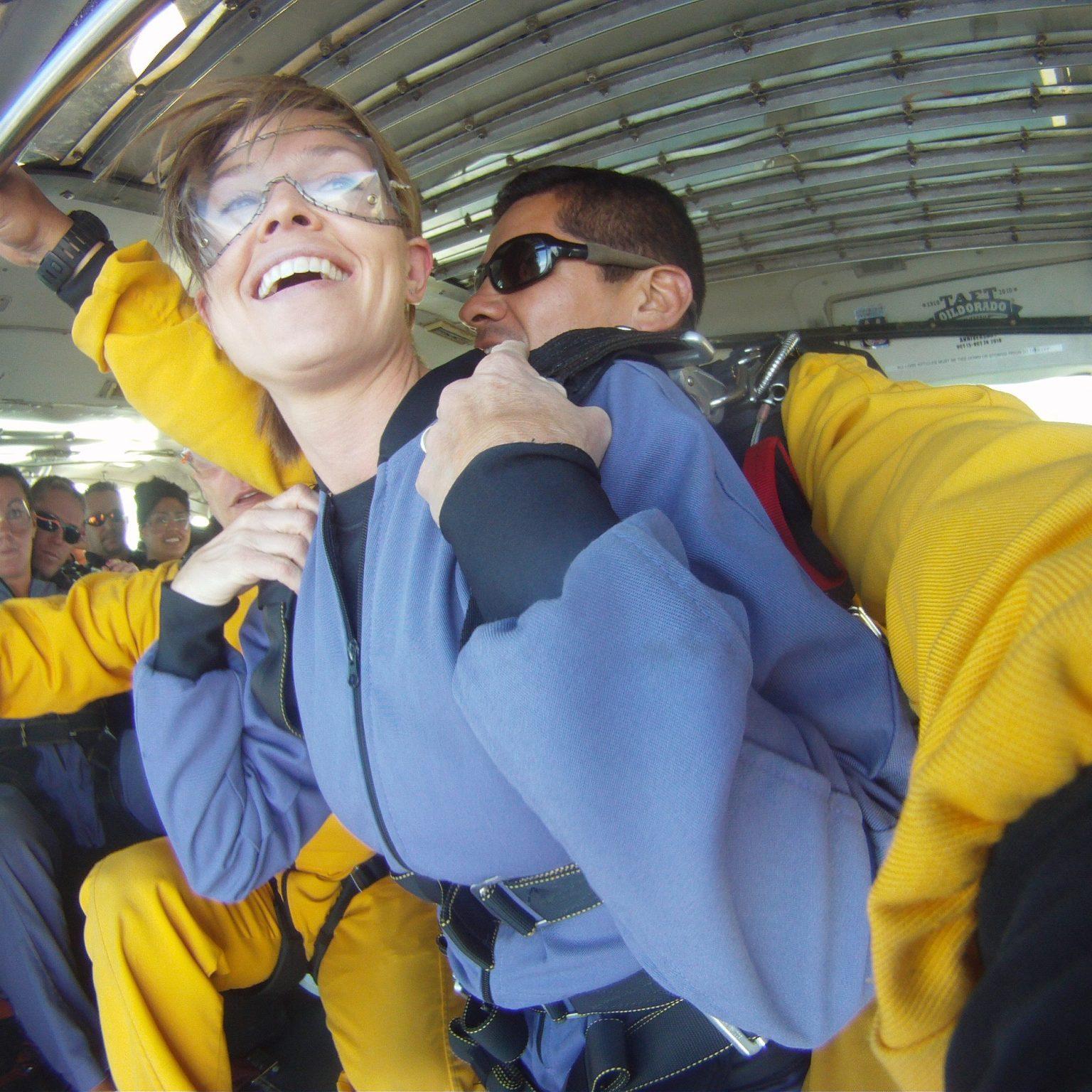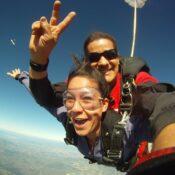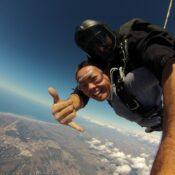
Skydiving Myths Debunked!
We’ve heard every excuse in the book. Typically when someone is waiting on the ground while their friends or family has the time of their life on their tandem skydive, they aren’t jumping out of either 1) fear or 2) because of something “they heard” about skydiving… or both. We’re here to uncover these myths and misconceptions so you know what’s really going on.
Here are some of the top skydiving myths, and the truth behind them!
Myth #1: You have to “sign your life away” before you get to jump.
Skydiving is a sport. Just like other sports there are potential risks involved. When you arrive at a skydiving center (also known as a dropzone), all jumpers — whether jumping tandem with an instructor to solo skydivers — must fill out a registration form and sign a liability release. It’s not just common, but standard practice to address safety concerns and such.
Myth #2: You get “that falling feeling”.
This is one of the most common misconceptions of skydiving. You don’t get that “falling feeling, your stomach doesn’t “flip”, nor is there a “sudden drop” feeling. Surprising, right?!
As you exit, a cushion of air — created by the forward speed of the aircraft — supports your body as you accelerate to terminal velocity! Because of this, there is no sudden drop feeling associated with freefall. It’s more like a floating or flying sensation, as you have no other objects to relate to except blue sky.
Myth #3: Skydiving is dangerous.
… said anyone who’s never been skydiving. Skydiving is very safe. In order to provide the safest skydiving possible, at Skydive Santa Barbara, all of our instructors are USPA (United States Parachute Association) instructor certified, we have the best and newest gear…not to mention the general statistics on the sport. According to the United States Parachuting Association, tandem skydiving’s safety record accounts for 0.002 student fatalities per 1,000 tandem jumps over the past decade. How does this compare to other safety statistics? According to the National Safety Council, a person is much more likely to be killed getting struck by lightning or stung by a bee.
ExploreLompoc.com puts it best with their opinion of SkydiveSantaBarbara:
“It’s safe, don’t worry! Skydive Santa Barbara is fully recognized by the FAA and has operated daily for the last 15 years with an untarnished safety record. They’ve provided jumps for more than 300,000 thrill seekers since 1998. So, what are you waiting for?”
Again, there are risks associated with any sport. Following strict safety standards, good preparation, safe equipment and continuously learning and training can minimize these risks. The USPA also holds a Safety Day every March. Basically dedicating the month to specifically talking about safety topics and training. Which demonstrates how dedicated the entire sport is to staying safe.
Myth #4 (sort of): You have to be in good physical shape to jump.
Good physical health is always a plus in any sport. However you’re not required to be flexible, have the endurance of a marathon runner, or the biceps and quads of a power lifter. Really, you’re just along for a ride.
Over the years at Skydive Santa Barbara, we have introduced tandem jumping to paraplegics, quadriplegics and one of our instructors taught a blind person! We have had people over 80 years old, and people around the world have celebrated their 100th birthday with a tandem skydive.
Please note there are special restrictions if you weigh more than 200 pounds, so check with the dropzone office in advance. Also, you cannot jump within 48 hours of SCUBA diving or within 24 hours after giving blood. If you are taking prescription drugs for an illness, you are required to have a doctor’s certificate stating that no adverse effects will result from making a parachute jump.
Myth #5: It’s hard to breathe when skydiving.
Another myth to add to the list. Most skydives take place from 13,000 feet or below, which provides plenty of oxygen to breathe normally. If you choose to jump from a higher altitude, however, you could be given supplemental oxygen – for example, if you choose our 18,000 foot jump for 90 seconds of freefall!
Myth #6: Before you land, your instructor pulls a rip cord.
Generally speaking, “ripcords” are obsolete… a thing of the past that previous generations used. Today, skydiving rigs (a rig is the entire system including the canopies and container), contain a pilot chute that the skydiver throws out. The pilot chute is found at the bottom of the container, and is attached to the bridle, which pulls out your main canopy.
Myth #7: When the parachute opens, it will “jolt” me up.
There is no going up, nor is there any jolting. You are falling, so you just begin to fall slower as the parachute begins the deployment process. The equipment works in a way that makes it slow you down gradually when deployment (the parachute opening) takes place. It might briefly startle you because you aren’t expecting it, but that’s about it.
Myth #8: If something happens to the parachute, [insert assumption here].
Again, although there are risks associated with any sport, skydiving is considered very safe. If anything were to happen to the main canopy (a malfunction), every rig has a reserve canopy (a secondary parachute) that is designed to open virtually free of errors. This is because it’s systematically and frequently repacked by a certified professional to ensure your safety while skydiving.
Myth #9: Skydivers are crazy people.
We’re all a little crazy, right? Skydivers are your family, friends, your dentist, barista, actor you saw in a movie last night, and more. There’s not a typical skydiver… we come from all walks of life with different backgrounds, hobbies, career paths and more. We do, however, have a commonality that bonds us all – we love to fly!
Call us today to start on your path to solo skydiving!
In the meantime, if you haven’t made your first tandem jump yet, we suggest this quick read on what you need to know before your first tandem skydive. Don’t forget to follow us on Facebook, Instagram and Twitter to see if photos from your skydive are featured sometime soon.
Blue Skies,
– The Skydive Santa Barbara Team



